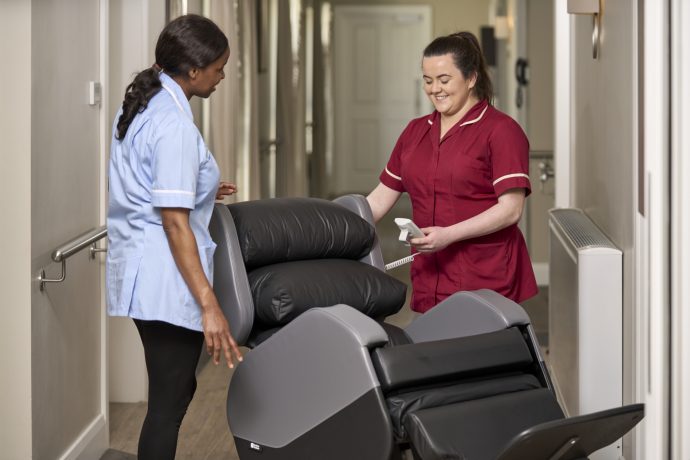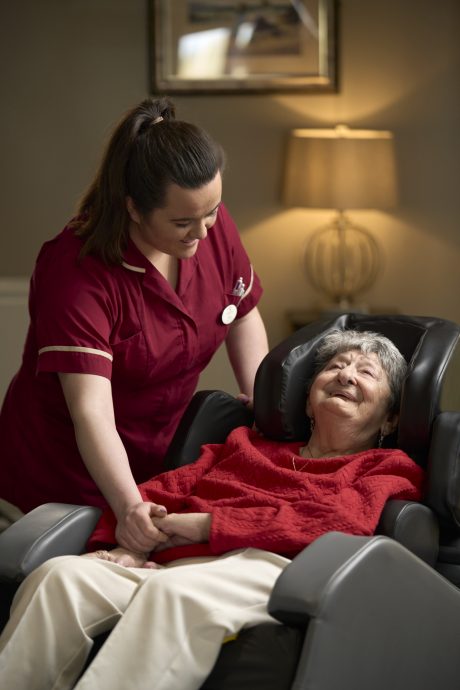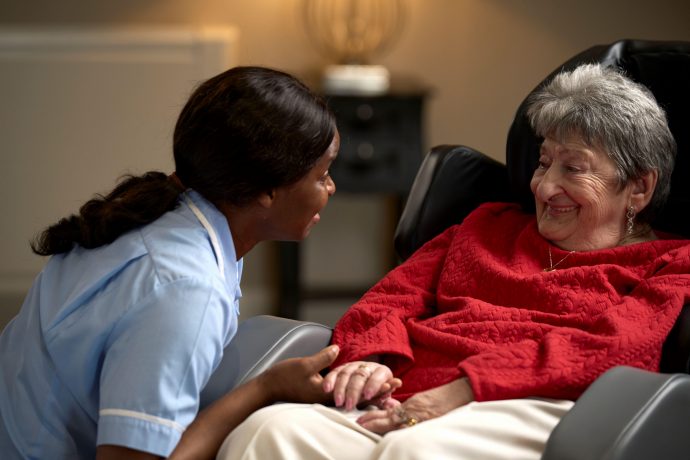
2nd September 2025


Let our online product finder guide you through our simple steps to choose the chairs that best meet your patient’s needs.
Seating Solution FinderThe Envelo cushion provides excellent pressure redistribution and comes as standard on all Seating Matters chairs, meeting the clinical needs of most clients.
Explore Envelo RangeSeating Matters specialises in clinical, therapeutic seating solutions designed to improve patient care and safety, offering products for pressure injury prevention, postural support, and mobility assistance in healthcare settings.
Learn MoreDiscover how Seating Matters has transformed lives with our innovative seating solutions - read our inspiring customer success stories now!
Customer StoriesUsed in academia, in clinical practice and with caregivers around the world to guide their practices around specialist seating.
Download Free Handbook
In this article we consider the top 3 reasons why a footplate is essential in order to stabilise the feet and we’ll look at the effect this has on patient posture, overall function and quality of life. To begin, we need to consider posture - what makes good posture in sitting?
In normal upright sitting, our body weight is distributed through various areas of our body. It is important for pressure management in sitting that as much of the patient’s body as possible is loaded in their chair, this includes the feet, a commonly overlooked area.
Weight distribution: 75% of body weight supported on 8% body area leads to high interface pressure.
(Trumble 1930)If 75% of our body weight is exerted through the buttocks and thighs that means the bony prominences in this area such as sacrum, coccyx, trochanters and the Ischial Tuberosities (IT’s) are more at risk of developing debilitating pressure ulcers.
19% of an average person’s body weight is distributed through the ankles and heels in normal sitting posture which could potentially make the feet a high risk area for pressure ulcers/injuries.
This highlights the importance of loading the feet properly and not neglecting this area in sitting. It’s even more vital for patient groups with certain medical conditions to load the feet – i.e. patients with a bariatric condition, patients with lower limb oedema, and patients with diabetes who are at a higher risk of foot ulcers and need extra pressure management in this area.
Things to consider:
Seat depth – In order to load the feet properly in neutral, the femurs should be correctly loaded in a chair with an appropriate seat depth which has been adjusted to suit their leg length. If the seat depth is too short they will be exerting more pressure through the feet and if the seat depth is too long they are at risk of being pulled into a posterior pelvic tilt/sacral sitting position to stabilise themselves, leaving them more at risk of pressure ulcers in this exposed area of the sacrum.
Seat height – In assessing the client during a seating assessment, for seat height the critical measure is their popiteil height which is measured from the back of the knee to the heel, and ensuring the footplate is in optimal position so the feet can be loaded evenly.
Back Angle Recline – The back angle of the chair should be assessed to correctly suit the individual patient, and properly measured and set to accommodate their hip angle to ensure the pelvis is in optimum position for full body loading and correct posture.
Tilt In Space – When we use tilt in space with patients we must ensure the feet are properly loaded to provide comfort and support for the user when they are repositioned.
Fully loading the feet– This means loading the feet flat on the footplate. If the patient’s feet are in plantar or dorsal flexion we can accommodate that within our Sorrento and Phoenix chairs which have an angle adjustable footplate.
Leg Laterals – for patients with involuntary movements and who need extra stability in this area we can add leg laterals to the calf pad to secure their feet that little bit more if required.
The physical condition of the patient – i.e. does the patient need added pressure management for the feet, if so we can provide a padded footplate.
The leg lengths of the patient – is there a leg length discrepancy? If so the footplate can be built up on one side to support the shorter leg ensuring both feet are properly loaded in neutral
It is essential to load the feet as part of loading the body – that’s why all of the Seating Matters chairs come with a footplate as standard with no extra cost to the customer.
Monaco – The Monaco are entry level chairs in the Seating Matters range, suitable for those who are still fairly independent but have reduced mobility and require the comfort, pressure management and support. Patients seated in the Monaco can rest their feet flat on the floor as they are generally mobile enough to stand independently, or alternatively the feet can be rested on the sliding footplate provided, which is commonly used when moving patients from room to room throughout a home or care facility. There is also an adjustable height and variable angle leg rest which can be supplied as an extra, to suit the Monaco chair which assists in patients with lower limb oedema.
Atlanta – The Atlanta chair comes as standard with an angle adjustable leg rest to support the legs and the feet, which can be taken away for transfers, and feet can be loaded on the sliding footplate, both of these are supplied with the chair.
Sorrento / Bariatric Sorrento – Angle adjustable calf pad/leg rest and angle and height adjustable footplate as standard to ensure adequate loading and support of the feet. This can also go to a 5 degree negative angle to further accommodate tight hamstrings.
Phoenix – Angle adjustable calf pad/leg rest and angle and height adjustable footplate as standard to ensure adequate loading and support of the feet. This can also go to a 5 degree negative angle to further accommodate tight hamstrings.
It’s even more important for patients with a bariatric condition to ensure their feet are loaded on an appropriate footplate. The increased weight of their abdomen and legs further increases the amount of body weight that is exerted through the feet which can be up to 1/3 of total body weight (compared to 1/5 in an average patient). If the person is tilted in a tilt in space chair without a footplate, this extra weight is exerted through the feet which are left dangling which can be very uncomfortable and painful for the patient, putting extra pressure on their spine and pulling them forward. When loading the feet properly on an appropriate footplate, the extra weight is evenly distributed through both feet, reducing the risk of pressure ulcers in this area and ultimately improving the patient experience and comfort within the chair.
To learn more about clinical seating provision, we recommend The Clinician's Seating Handbook for a more in-depth look at seating in care facilities, hospitals and private homes.
Sign up to our mailing list to get practical tips and latest research delivered to your inbox!
Take the next step to achieve clinical excellence and a 24 hour package of care for patients.

Arrange a free, no obligation seating consultation with your local Seating Specialist.

Schedule a call at a time that suits you to speak with our experts.

Arrange a free, no obligation trial of clinical, therapeutic seating

2nd September 2025

15th August 2025

15th August 2025